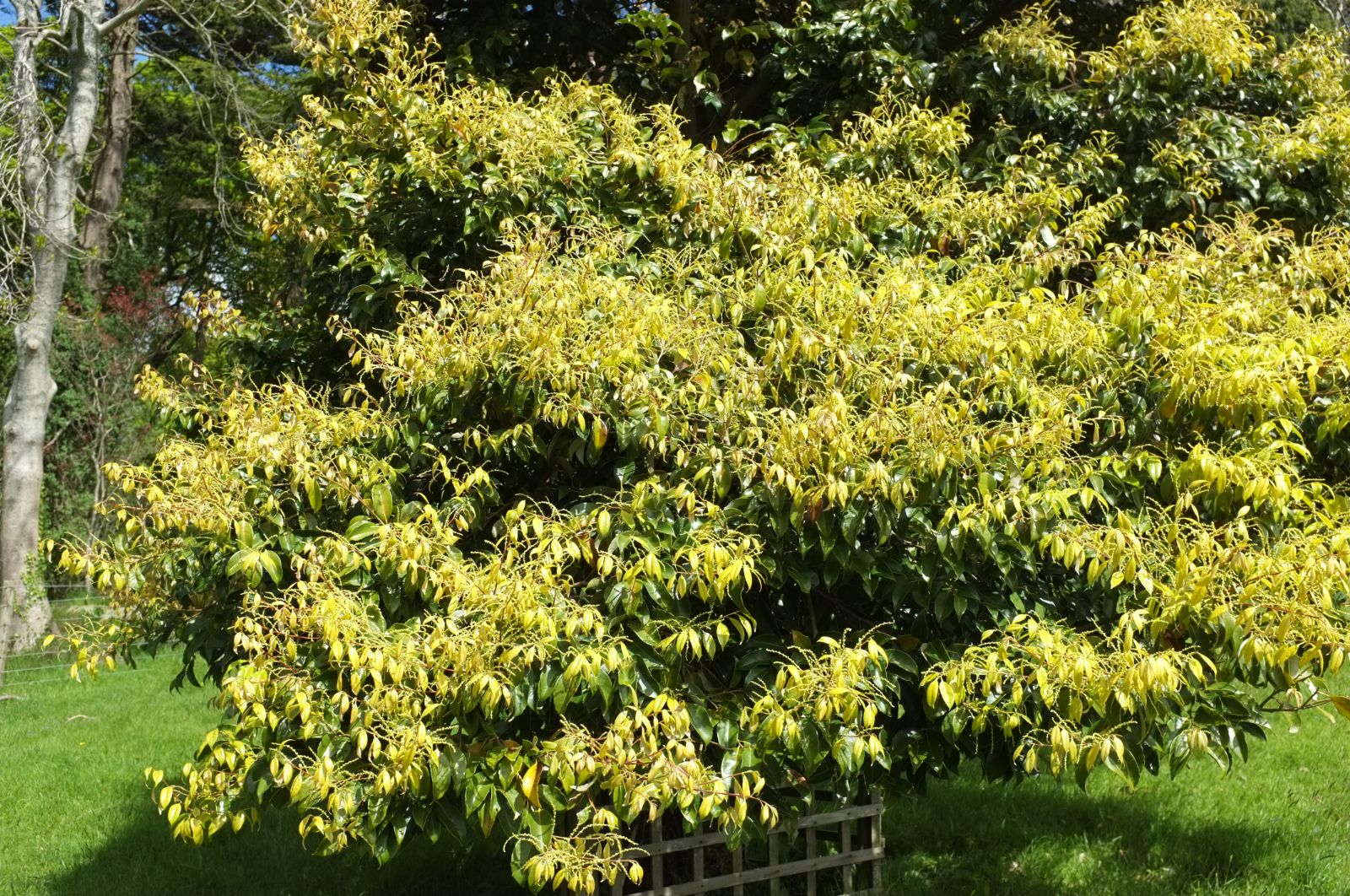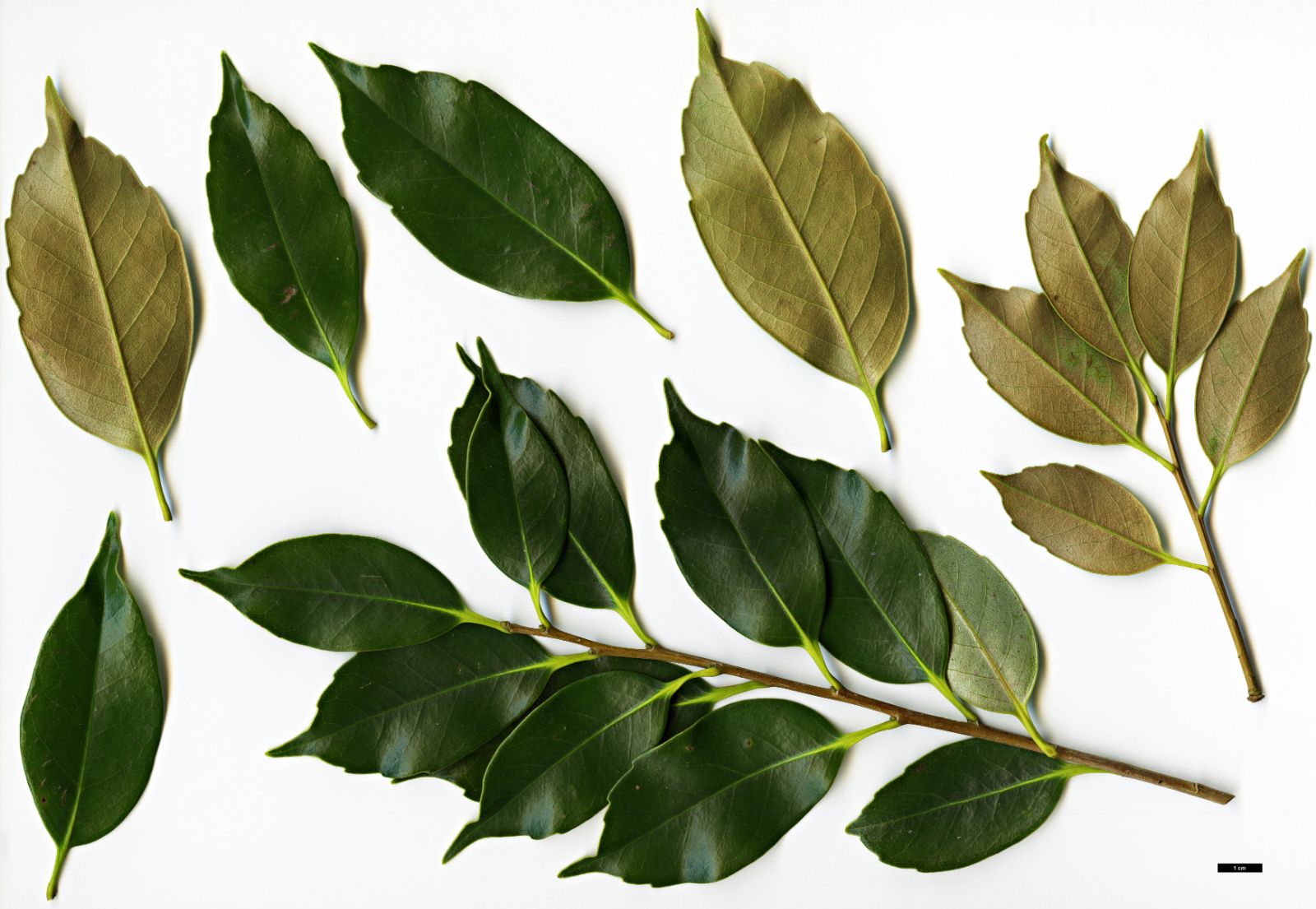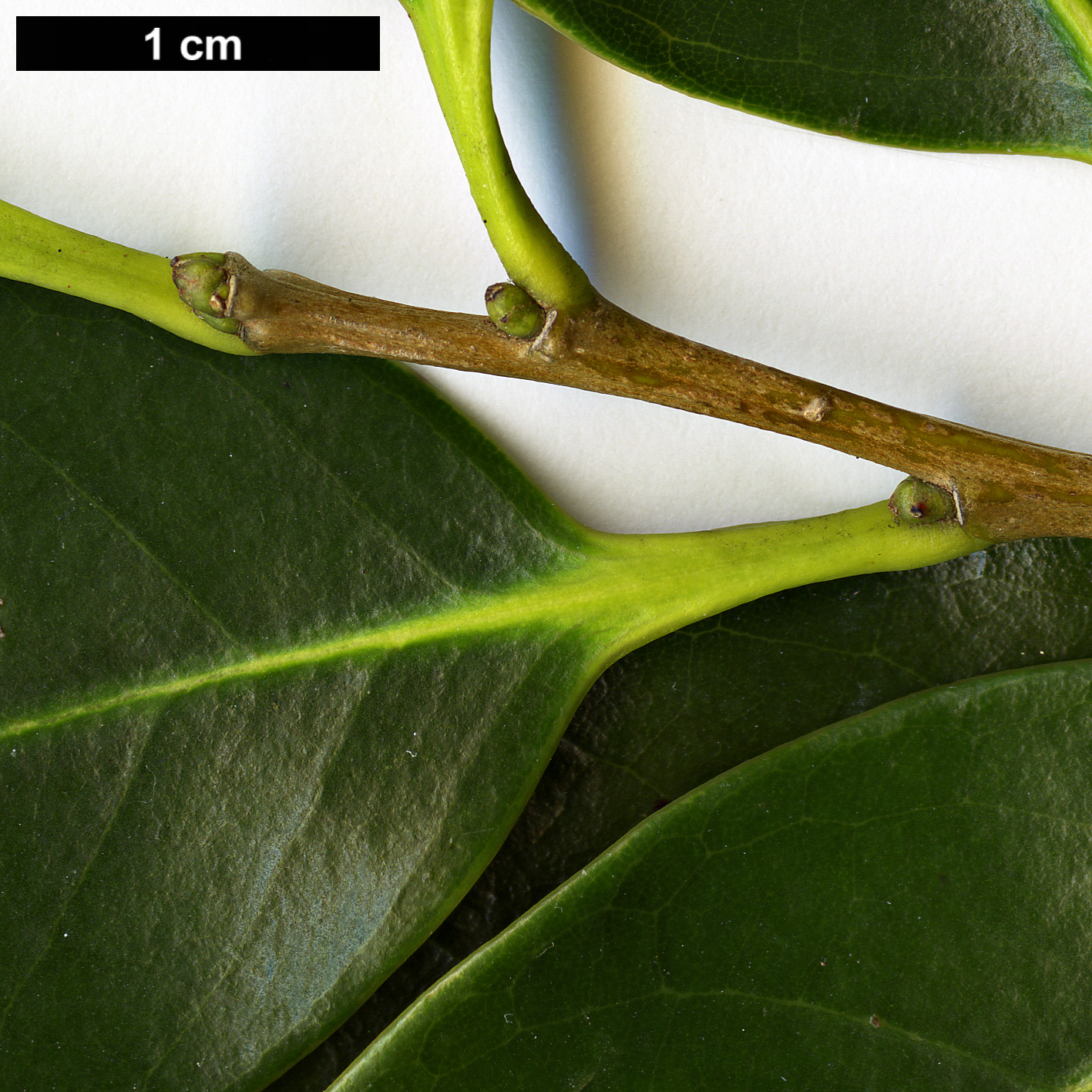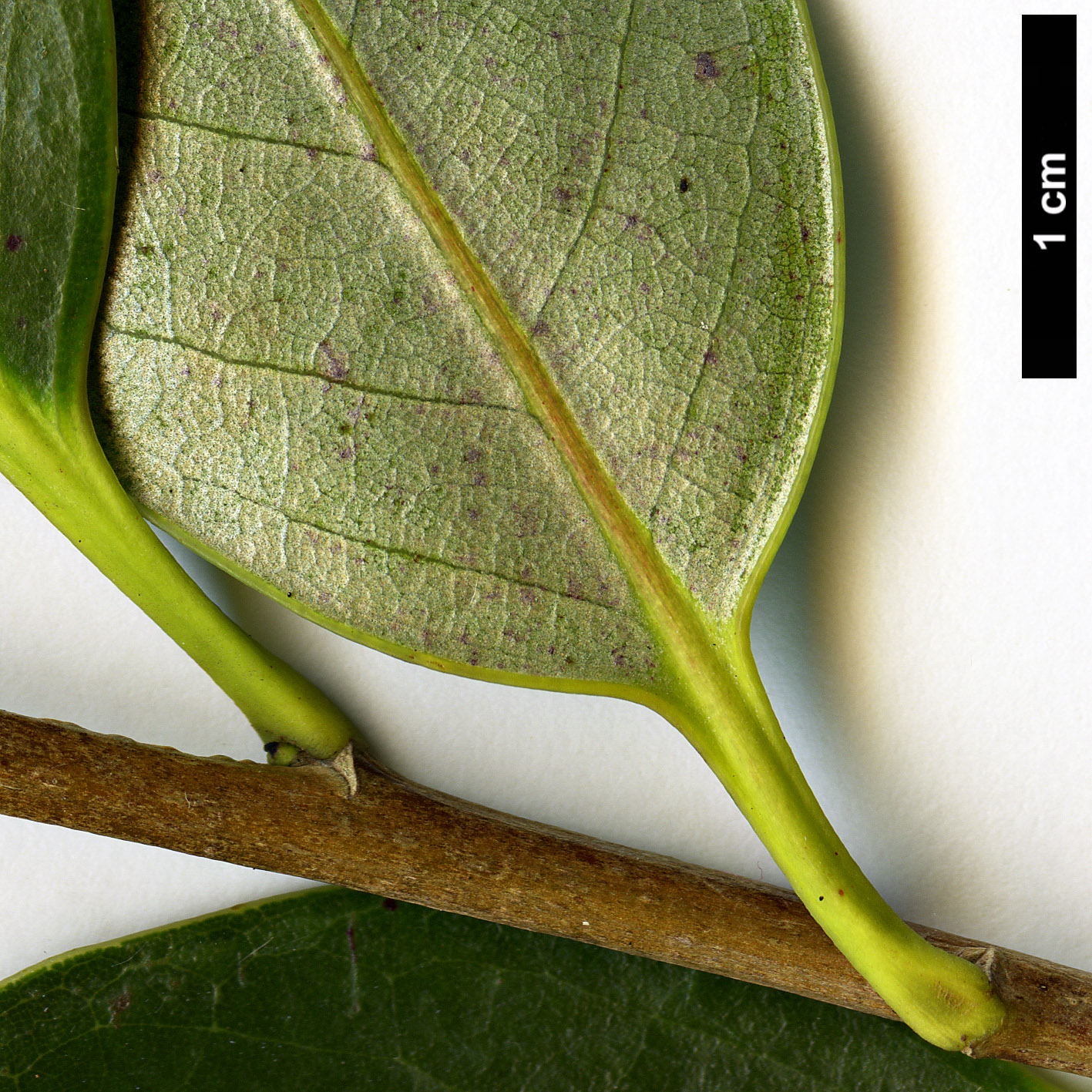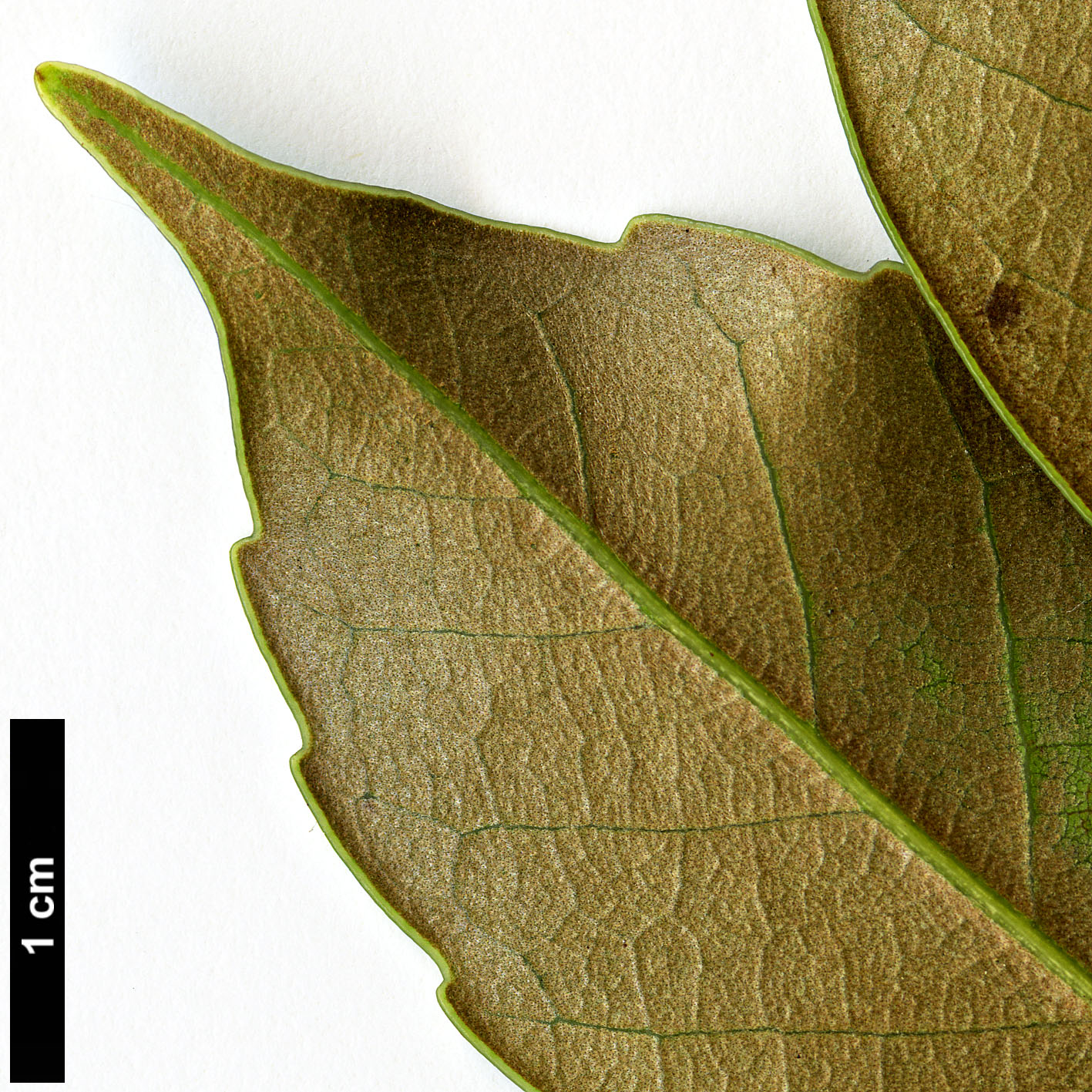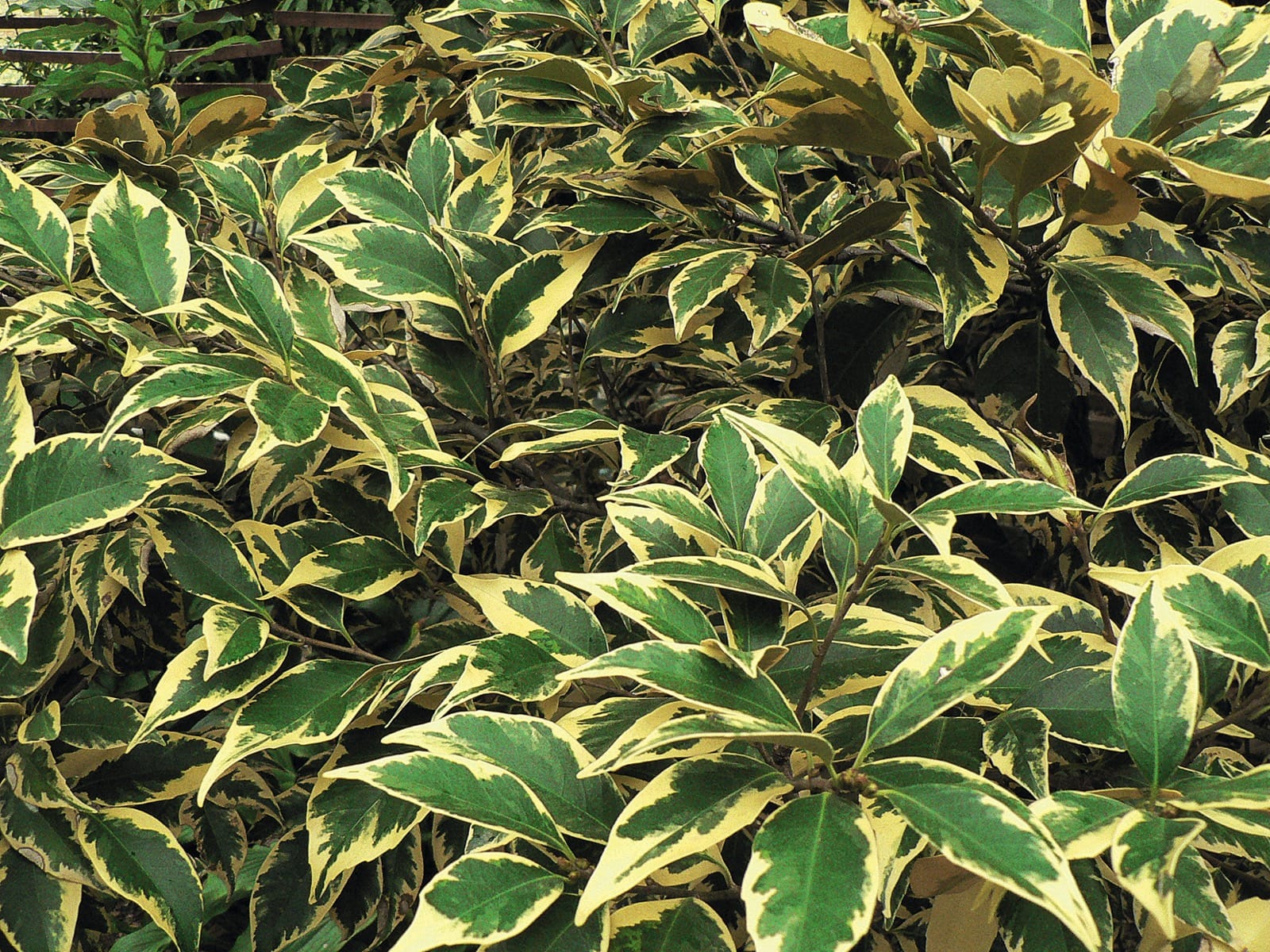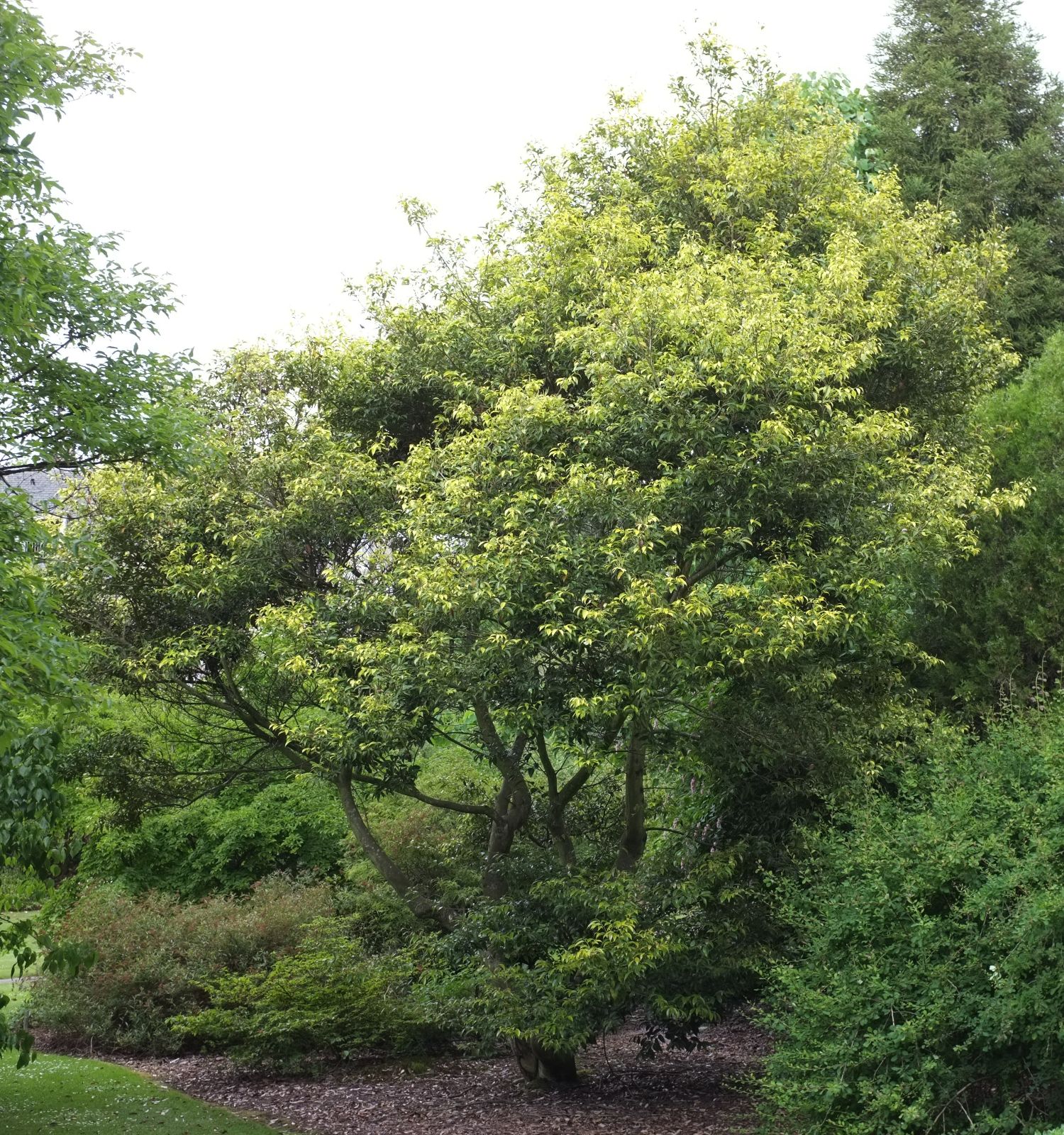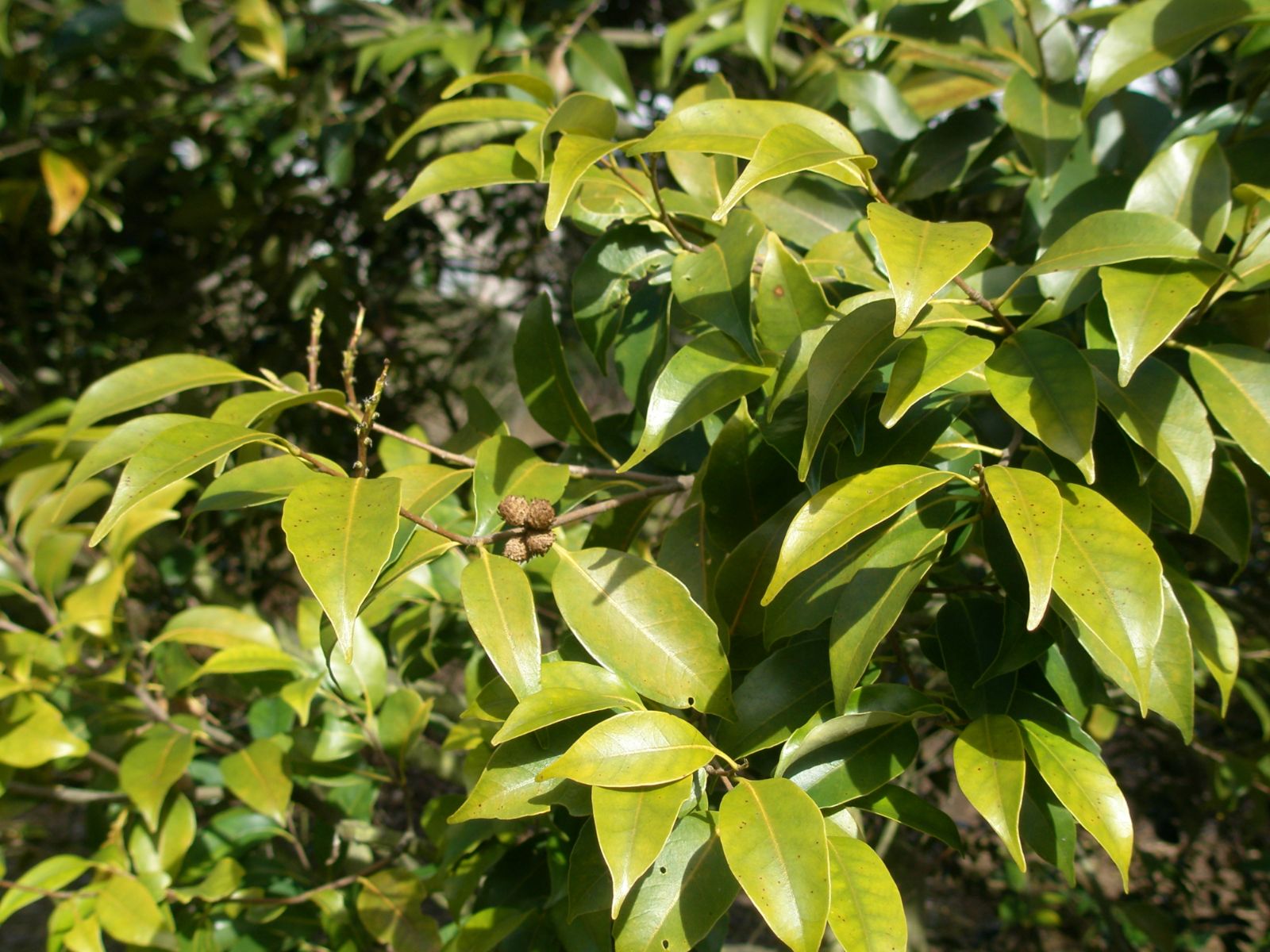Castanopsis sieboldii
Credits
Article from New Trees by John Grimshaw & Ross Bayton
Recommended citation
'Castanopsis sieboldii' from the website Trees and Shrubs Online (treesandshrubsonline.
Genus
Synonyms
- C. cuspidata var. sieboldii (Makino) Nakai
Tree to at least 22 m, forming a wide canopy. Branchlets glabrous. Leaves leathery, 5–10 × 2–3 cm, ovate, oblong or broadly lanceolate, upper surface glabrous and deep green, lower surface covered with greyish or reddish brown scales, 8–11 secondary veins on each side of the midrib, margins undulate to serrate, apex acute; petiole 0.5–2 cm long. Staminate inflorescences to 10 cm long, pubescent. Pistillate inflorescences stiff, spreading and to 8 cm long. Cupules subglobose, 0.8–1.5 cm diameter and almost completely enclosing the nut; bracts scale-like, 0.3–0.5 cm, covered in soft grey pubescence. Nuts one per cupule, acute at apex, 1.5–1.8 cm long. Flowering March to April, fruiting October (Japan). Makino 1909, Walker 1976. Distribution JAPAN: Honshu, Kyushu, Ryukyu Is., Shikoku; SOUTH KOREA. Habitat Evergreen, broadleaved forest, often dominated by C. sieboldii, between 200 and 2100 m asl. USDA Hardiness Zone 7–8. Conservation status Not evaluated. Illustration NT221. Taxonomic note This species is very closely related to C. cuspidata (also of Japan and Korea), and has been treated as a variety of it (C. cuspidata var. sieboldii (Makino) Nakai). However, C. sieboldii has a larger nut and a thicker leaf due to two layers of epidermis rather than one (Kobayashi et al. 1998, Yamada & Miyaura 2000). Castanopsis sieboldii occurs in the Nansei-shoto (Ryukyu) as var. lutchuensis (Koidz.) T. Yamaz. & Mashiba.
This taxon is widely if infrequently cultivated, usually under the name Castanopsis cuspidata var. sieboldii. It is not clear when it was first introduced, but several recent collections have been made, including one in 1987 by Warner and Howick (WH 888) and another in 1985 by a US National Arboretum expedition to Korea. The authors of the report on this latter expedition (Dudley & Yinger 1987) considered it to be a ‘potentially valuable evergreen landscape tree’, noting that it has metallic-coppery lower leaf surfaces – and that the majority of its acorns had been eaten by their collectors! A tree from this source is now 13 m tall at the David C. Lam Asian Garden, and has proved to be totally hardy. Unfortunately this was not known at the time of its planting and it was placed in shelter, which has resulted in it forming a drawn-up specimen rather than the broad-crowned one it would have become had it been sited in the open (P. Wharton, pers. comm. 2007). Similarly, at Quarryhill, a tree from Warner & Howick’s 1987 collection (WH 888) on Oshima Island, Japan, planted in 1990 but somewhat crowded by other trees, is now 8 m on a single trunk, 10 cm dbh; the crown width is 4.5 m (H. Higson, pers. comm. 2006). At the Sir Harold Hillier Gardens there are another two specimens from WH 888 but these are growing very slowly (A. Coombes, pers. comm. 2007). The same collection is also represented at Howick. Coming from 15 m asl, material of this provenance may not be ideal for colder areas. When not too crowded, C. sieboldii can be expected to make a rounded, evergreen tree very similar to the comparatively familiar C. cuspidata. Several variegated clones have been selected in Japan (Hirose & Yokoi 1998), and at least one (the marginally variegated ‘Angyo Yellow’) is in cultivation in the United States.

